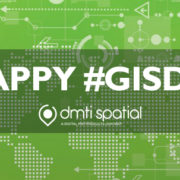4 Ways Advertisers use Location Intelligence to Identify Effective Ad Space
With all of the platforms available for advertising today, marketers have to find the most effective way to reach customers and craft messaging that is consistent but also aligns with the platform that message is being delivered on.
While mobile devices provide insights on how people behave online, location technology offers insights on what people do offline by showing their physical location, when they are digitally connected but not actively engaging in online activity. Aggregating online and offline behavior is incredibly powerful when developing advertising campaigns.
Here’s an overview of how location intelligence applies to various marketing channels:
Online/Social Media Ads:
This refers to digital and mobile ads on social media, search advertising, Adwords, etc. By adding designated locations to digital ads, you don’t waste money on clicks from customers outside of your specified location. Combined with geotargeting and geofencing, you can develop very specific ads based on consumer behaviour and intentions.
Print/TV/Radio/Podcasts:
While these four ad segments are quite different from each other, they are lumped together here because they all have very precise information about their audience that they will share with advertisers. However, location intelligence gives you an edge over other advertisers by helping you leverage offline behaviour to craft very specific messaging to your target audience.
Billboards:
Location intelligence platforms provide continually updated demographic data. Use demographic insights along with geotargeting to gather information about highly concentrated locations of your target market to determine the most effective placement of billboard advertising. DDGuerilla Advertising/Marketing: This is the most unconventional form of advertising, but can be the most impactful if done right. For example, if you’re a company that heavily targets women between the ages of 26-40, you can use your location intelligence platform to identify an urban area with a high percentage of female employees. Setting up a guerilla campaign for a couple hours during lunch time could be a hands-on way to get directly in front of your target audience.
Guerilla Advertising/Marketing:
This is the most unconventional form of advertising, but can be the most impactful if done right. For example, if you’re a company that heavily targets women between the ages of 26-40, you can use your location intelligence platform to identify an urban area with a high percentage of female employees. Setting up a guerilla campaign for a couple hours during lunch time could be a hands-on way to get directly in front of your target audience.
Omnichannel Marketing:
Putting it All Together With the location-based insights you’ve leveraged to determine effective ad space, you can also determine how to integrate your marketing initiatives to ensure all ad spaces support each other. For example, use social media and radio ads to draw attention to an upcoming guerilla marketing initiative. Or develop consistent messaging for print, TV/Radio and billboards to draw attention to a major new product offering for people in a specific area.
Everything is dependent on your business or company’s specific use case, but these examples show how you can leverage location intelligence to see where the most impactful ad placements are by allowing you to gather online and offline information about your target market. Location intelligence will help you determine which ad spaces will be more effective for you, and will provide information about how to craft consistent messaging for each channel.
Want to learn more? Read our Ultimate Guide to Using Location Based Insights for Omnichannel Marketing
Additional Reading:
Celebrating GIS Day
Did you know there is a GIS day to celebrate the impact of GIS technology around the globe? Today is GIS Day, and at DMTI Spatial we see this as a great opportunity to share our knowledge of the role Canada has played in the development of GIS as a technology that has shaped and changed our world in profound ways.
Today, 66% of enterprises rank GIS technology as critical or very important to revenue growth strategies, and many fundamental business practices–even elements of our national safety suc as assisting with emergency responsiveness and preparedness–rely on GIS technology.
What is GIS Day?
GIS Day started in 1999 as a movement launched by Esri to encourage people to learn and share knowledge about the widespread impact of GIS technology. The movement has grown over the years, and today GIS Day has a Facebook group with 18,000+ members!
GIS Day provides a forum and an opportunity for GIS experts to demonstrate the real-world applications of this amazing technology and how it makes a difference in our society. Every map has a story, and GIS Day is the time to celebrate those stories.
Canada and GIS Day
Canada’s history is rich in technological achievements, and is a pioneer in the development of GIS. Many of the methods and techniques used by GIS specialists throughout the world were developed or conceptualized by Canadians.
Here are some examples of how Canada has contributed GIS technological innovations:
- Dr. Larry Morley: Widely considered a remote sensing pioneer, Dr. Morley is remembered for starting the remote sensing program in Canada. He was the founding Chairman of the Canadian Remote Sensing Society in 1974, and in 2015 he was inducted into the Canadian Science and Engineering Hall of Fame.
- Dr. Roger Tomlinson: Known as the ‘father of GIS,’ Dr. Tomlinson worked for the Ottawa-based survey company Spartan Air Services. It was here that he conceptualized the idea of combining land use mapping with computer technology, and became central to the development and eventual applications of GIS technology.
- RADARSAT: This Canadian-based remote sensing Earth observation satellite is an advanced satellite system providing high quality, accurate images of the earth for a wide range of uses–one of which of course is integration with GIS technology.
- Geomatics: This fundamental GIS term was introduced by Michel Paradis, a French-Canadian surveyor, during a keynote address to the Canadian Institute of surveying in 1982. He argued that mapping tools would need to innovate alongside the pace of technology to truly address modern mapping needs. The phrase ‘geomatics’ became the accepted umbrella term for the tools related to mapping technologies.
GIS Technology in Canada Today
Many Canadian companies and scholars continue to push GIS technology forward, often with support of various government programs. Geospatial technology is critical to the functioning of many technologies people have become dependant on, including mapping applications, sensor technologies necessary for the Internet of Things (IoT), and Artificial Intelligence (AI).
The Canadian Geospatial Data Infrastructure (CGDI) is supported by the Canadian government, and is the source of “standards, policies, applications, and governance that facilitate the access, use, integration, and preservation of spatial data.” GeoConnections is another national program mandated to lead CGDI through the use of standards-based technologies and operation policies for data sharing and integration. This program is incredibly important, as it ensures that quality GIS technology is accessible to the people who need it.
DMTI is Canada’s Leading GIS Technology Provider!
Canadian people and companies will continue to make major contributions to the advancement of GIS technologies throughout the world. Here at DMTI we are proud contributors to Canada’s GIS past, present, and future.
Founded in 1994, we knew early on that the power of location could serve many business sectors including finance, insurance, telco, government, retail, and marketing. DMTI introduced CanMap, the first coast-to-coast digital street map in Canada! As GIS technology became more sophisticated, so did we, adding data to maps, finding unique and innovative ways to serve Canadian businesses.
Contact us today, and learn how DMTI Spatial can help your business grow!
A Fast Moving World – Maintaining Your Investment with Location Intelligence
It is generally recognized that customer information typically degrades at a rate of about 3% per month. The natural churn of corporate customer and prospect information will deteriorate/impact more than 30% of customer records within a single fiscal year. Enterprises are challenged to maintain mission-critical workflows and a customer-focused business relationship when vital aspects of their address information are constantly changing.
A key aspect of location intelligence is the ability to keep enterprise data aligned to customer lifecycle changes driven by the external environment. If address data changes because of municipal or postal changes, the enterprise must be able to accommodate internal updates to prevent loss of contact with customers, delayed revenue or loss of important marketing records.
To accomplish this, a location intelligence provider should offer:
Currency:
Includes on demand updating services to ensure all geographic information and derived references are up-to-date, minimizing the possibility of cascading error throughout lines of business in an enterprise.
Versioning:
Provides a historic view of changes to addresses and other location-specific objects for auditing and change detection purposes.
Geography:
Provides additional topographic data layers that are critical to many business applications and the location intelligence derived from them, for example: hydrology, roads and land use. These enrich the canvas for business decision making.
Fact: Canadian Addresses Change
- In a typical year, approximately 50,000 postal codes are born, altered or retired affecting over 1.75 million addresses.
- Over 100 municipalities change their name or geographic extent affecting over 3.3 million civic addresses.
- Emergency 911 and other address enhancement initiatives are increasing the nature and rate of change within the Canadian civic address landscape.
Contact us to learn more how DMTI Spatial can assist with keeping your address data up to date.
Additional Reading:
A telecom operator’s guide to selecting a 5G cell site with Location Intelligence
Learn how telecom operators are beating the competition by leveraging a location intelligence platform.
A public-private consortium has already pumped in $400 million for 5G research in Canada. How are telecom operators moving forward?
The next-generation wireless network, or 5G, is being hailed as a quantum leap in telecommunications technology which will make download speeds 100 times faster than present-day. But 5G is not about streaming 4K movies in a flash alone. The technology will bring major advances in sectors that rely heavily on real-time data (finance, utilities, transportation, public safety, etc.) as well as connected industries like the Internet of Things and self-driving cars.
So, it’s no surprise that the governments of Canada, Ontario and Quebec are joining hands with private companies like Ericsson, Ciena Canada, Thales Canada, IBM and CGI to create a $400-million 5G research fund. This investment will be used to set-up an array of research labs which will test products and services running on 5G networks.
To be clear, 5G mass deployment in the Canadian market is not expected until 2020. This is because 5G requires an infrastructure which is vastly different from past wireless technologies.
5G Infrastructure: Robust and Extensive
5G is fueled by small-cell technology. Its main component is as small as a shoebox and the accompanying hardware no bigger than a refrigerator. This is the same tech that powers 4G, but on a very small scale. 5G requires 10 to 100 times more antenna locations than those needed by 4G or 3G networks, simply because its signals cannot travel as far as old radio frequencies can.
To draw an analogy, imagine 5G as an e-commerce giant. Instead of trying to cater to a wide region with a single central warehouse, it spreads out its inventory into small dispatch units. So, when the holiday season comes and orders go up, it is able to serve customers much more quickly and efficiently. Similarly, in the 5G universe, if one cell site is compromised, other cell sites help to meet the demand.
5G cell site selection
Since Canadian telecom operators will be investing quite heavily into 5G antennas, foolproof cell site selection is a necessity rather than a choice. Here, a location intelligence platform can prove to be a telecom business’ best friend because it can help the business to identify 5G cell sites based on definitive criteria, such as:
Population Density
In order to maximize network coverage and make sure their investment would get the highest possible returns, telecom operators would want to install 5G antennas at places that have a large number of residents. These population clusters can be clearly mapped by a location intelligence platform. Moreover, telecom companies would also get access to detailed insights on population growth trends, which would allow them to future-proof their plans.
Existing Clientele
With network providers racing to take the lead in 5G rollout and adoption, it is imperative for them to know where exactly their existing clients are and upsell 5G to them. Not only can precise location information help make this process a breeze, but network providers would also be able to enhance customer satisfaction and build greater loyalty for their brand.
Demographics
5G is expensive, we have already established that. And even though telecoms may not have finalized the rates at which they will offer the technology to the end consumer, it makes good business sense to invest in the area which houses an affluent population. A location intelligence platform can help telecoms zero down on hotspots of high median income effortlessly.
Points of Interest
Progressive telecom companies know the importance of tapping into points of interest (POI) data to supplement their revenues. A location may be in the suburbs, but if it frequently plays host to large-scale events or music festivals, telecoms would want to make sure their services are available in that area. Visualizing these POIs on the map can help companies make sure they don’t lose out on business from these high-demand sites.
Accessibility
An important factor that simply cannot be ignored while selecting cell site locations to deploy the 5G infrastructure is the accessibility of that place. Uninterrupted service can only be assured if the technical team has uninterrupted access to a cell site. Here, a location intelligence platform can assist by mapping out all possible 24/7 entry and exit options for the crew.
Local Laws
Proper knowledge and understanding of zoning regulations and local laws are imperative for a smooth 5G rollout. Instead of scrambling for information from different sources, network providers can easily use a location intelligence platform to collate various laws, and draw out insights like which sites allow installations for commercial use at the click of a button.
While there is no doubt that 5G is inflaming a technological revolution in Canada, the market is completely up for grabs. It would be interesting to see which progressive telecom operator beats the competition by leveraging a location intelligence platform loaded with rich data and unparalleled insights.
Contact us to learn more.
Additional Reading:
5 Ways Canadian Retailers Should Be Using Location Data and Technology
Read to know why location technology and location data sets are indispensable weapons in any retailer’s artillery
Location Intelligence adding a powerful dimension to Fraud Management
Fraud represents a multi-billion dollar problem for the banking and insurance industry in Canada. Location intelligence and analytics can add a powerful dimension to help manage fraud.
The growing complexity of fraud and well-executed rings have exposed the limitations of traditional detection systems, such as red flag indicators, investigations based on manual observations, internal audits findings, and software that shows anomalies based on a pre-defined set of business rules. In order to address fraud, organizations are becoming more proactive and sophisticated in their approach to data and information. In particular, data analytics and predictive modeling are allowing insurers to uncover complex, organized fraud activities using both structured and unstructured data.
Geospatial Tools
Although location intelligence and analytics represent a key piece of the fraud puzzle, traditionally they have been overlooked or vastly underutilized. Geospatial analytics tools provide access to a rich library of address-related content including name and phone number, demographics, firmographics, Canadian flood data, environmental risk information, land use information, earthquake boundaries and more, and can help unlock useful information and allow insurers to connect the dots on previously hidden fraud schemes.
Geo-coding
Accurate geo-coding can also help verify the claim location. There are several technology companies looking to improve field documentation and workflows for P&C insurers and claims professionals that use geo tagging and time stamping to determine the authenticity of information of property claims in an exact geographic coordinate. Was the claim in an area where a significant loss event, such as flooding, actually occurred? Geospatial analysis can be used to identify the exact area affected by a natural disaster, which helps determine the amount of risk to insured properties and weed out claims that are filed from areas not located in the affected zone.
This could involve, as an example, a spate of hail damage claims in a particular area. An insurance company can quickly pinpoint the exact geographic coordinates of the claim in real-time and overlay the storm’s path over that location. Was the claim location actually affected by the storm, or is it outside the boundaries (or marginal)? In large loss events, insurance companies often experience claims ‘leakage’ – when claims payouts are more than the terms set out in the policy. Precise use of location intelligence can help stop the leakage of opportunistic claims, or ‘soft fraud’. Location intelligence can help with more than just catastrophic events. There may be, as an example, a series of small, but costly kitchen fires in a certain neighborhood. Is this just an anomaly or is it neighbors’ talking over the fence about how small fires can lead to full kitchen replacement costs? With location intelligence, this cluster can be flagged for follow up investigation.
Conclusion
With the inherent accuracy provided by geocoding and the analytic capabilities afforded from a vast number of inputs, location intelligence is a powerful tool for managing fraud and risk mitigation. Organizations that build location intelligence into their business strategy will undoubtedly have a competitive advantage through better risk management, visual diagnostics related to geography, and on-demand access to a wealth of location- based information and assets.
To learn more, read our Mitigating Risk with Location Intelligence white paper.
How Spatial Technology Makes Great Customer Experiences Part of Your Insurance Company’s Brand
Insurance is a competitive industry, and when everyone is offering the same services for similar value, there’s only one thing that sets you apart: branding. We’ve talked about how spatial technology helps improve customer experience for insurance companies, but did you know a great customer experience could also be part of how your company brands itself? Branding an insurance company ensures customers know you prioritize their satisfaction, and that’s what makes your company unique from everyone else.
A great customer experience is an incredibly valuable market differentiator. Statistics show that companies known for providing strong customer experiences have more loyal customers, stronger word of mouth referrals, higher profits, and better customer retention than companies scoring lower on overall customer experience.
Leveraging the right technologies to support customers is essential. Spatial technology can play a powerful role in branding an insurance company as a leader in providing great customer experiences.
Branding an Insurance Company Using Spatial Technology
Insurance companies know how important it is to provide great customer experiences, but it turns out most of them aren’t meeting expectations. Insurance-Canada recently published an article based on the J.D. Power 2018 Insurance Digital Experience Study, discussing how insurance companies are falling short on digital customer engagement.
The study found 3 key areas where most insurance companies fail customer expectations. Here they are, with an explanation of how a spatial technology platform can help:
Digital Capabilities:
The study showed that most companies have attractive websites, but are lacking in digital offerings such as processing claims, effective shopping and servicing of policies. Modern consumers expect to do everything online, and potential customers get frustrated by what they perceive as a disjointed experience on most insurance websites.
How a Spatial Technology Platform Helps: A strong spatial technology platform interfaces with your company’s website and customer service software to stream current, updated property information that aligns with digital queries. Data feeds into the rules and parameters set by your company’s underwriters. This allows you to automate the digital shopping process from end-to-end.
Lack of Personalization:
Insurers that tailored insurance offerings to customers’ specific needs scored higher in the study than those who did not. These companies are able to offer precise guidance on insurance plans that will best serve the customer.
How a Spatial Technology Platform Helps: Instant access to spatial data helps personalize the underwriting process and insurance offerings by delivering a complete overview of customer portfolios and property information for properties anywhere in the country. This information presents the big picture analysis of a customer’s property ownership history and current needs, allowing you to effectively review risk and offer the appropriate services to serve them with minimal input from them.
Seamless Digital Experience:
Customers want an insurance website that’s easy to navigate and instantly get the information they need in a clear, understandable format. Customers want providers to offer a range of services that can be completed online.
How a Spatial Technology Platform Helps: Spatial technology platforms feed into your company’s software, allowing you to use spatial data for quick and efficient digital services, but also to provide the information customers are looking for. Additionally, spatial data is continually updated, ensuring that customers are working with only the most current, accurate information.
A strong spatial technology platform has the ability to address all of these common customer grievances, while protecting your company’s rules and workflows. This ensures coverage remains consistent with the risk selection and pricing models developed by your company’s actuarial/risk group.
The Right Spatial Technology Platform Helps Digital Engagement
Leveraging customer experience tactics to brand your company and set it ahead of your competition helps you deliver on modern consumer expectations. Spatial technology allows insurance companies to develop engaging, seamless experiences that support what customers want, need and expect.
DMTI is the gold standard for GIS and location-based data in Canada, offering insurers scalable on-demand tools that support real time workflows. DMTI Spatial’s Location Hub® & UAID® is the only solution of its kind in Canada, and supports you company’s risk assessment process by delivering data visualization tools, and data delivery infrastructure to provide high-precision location accuracy.
Click here to find out how DMTI can help your insurance company become known for providing amazing customer experiences.










